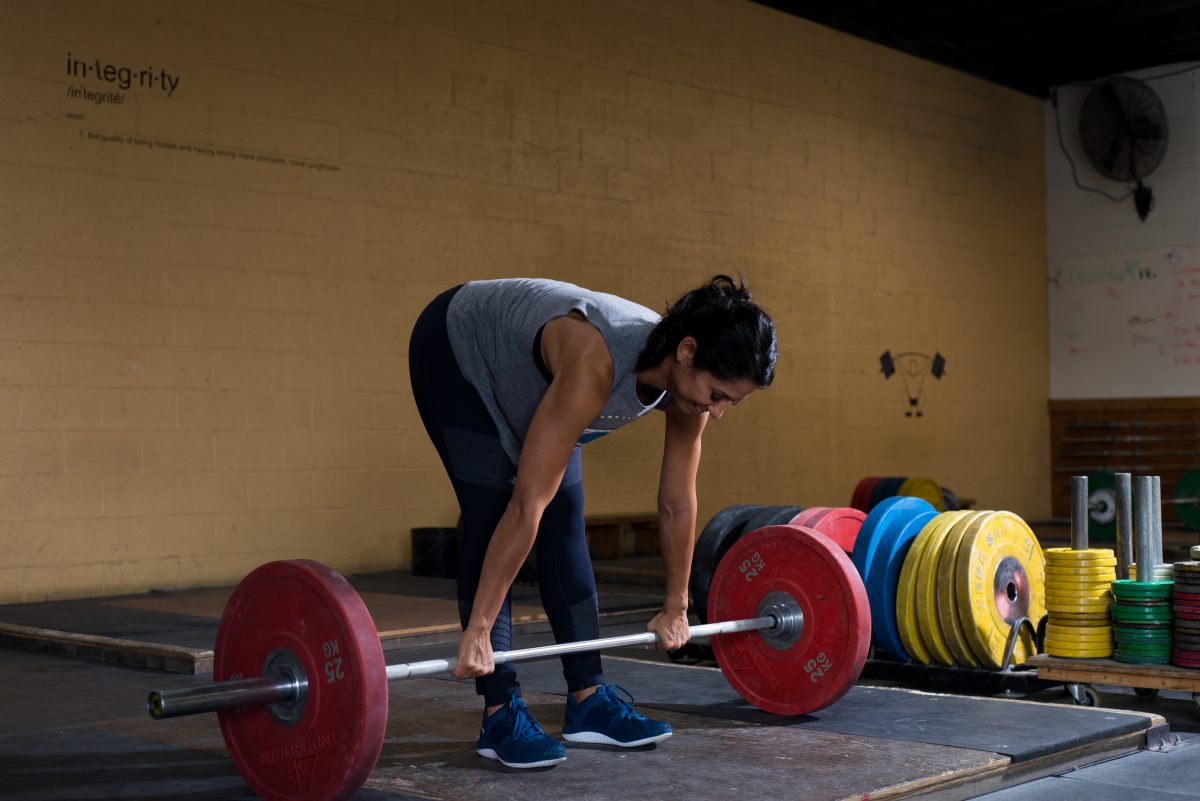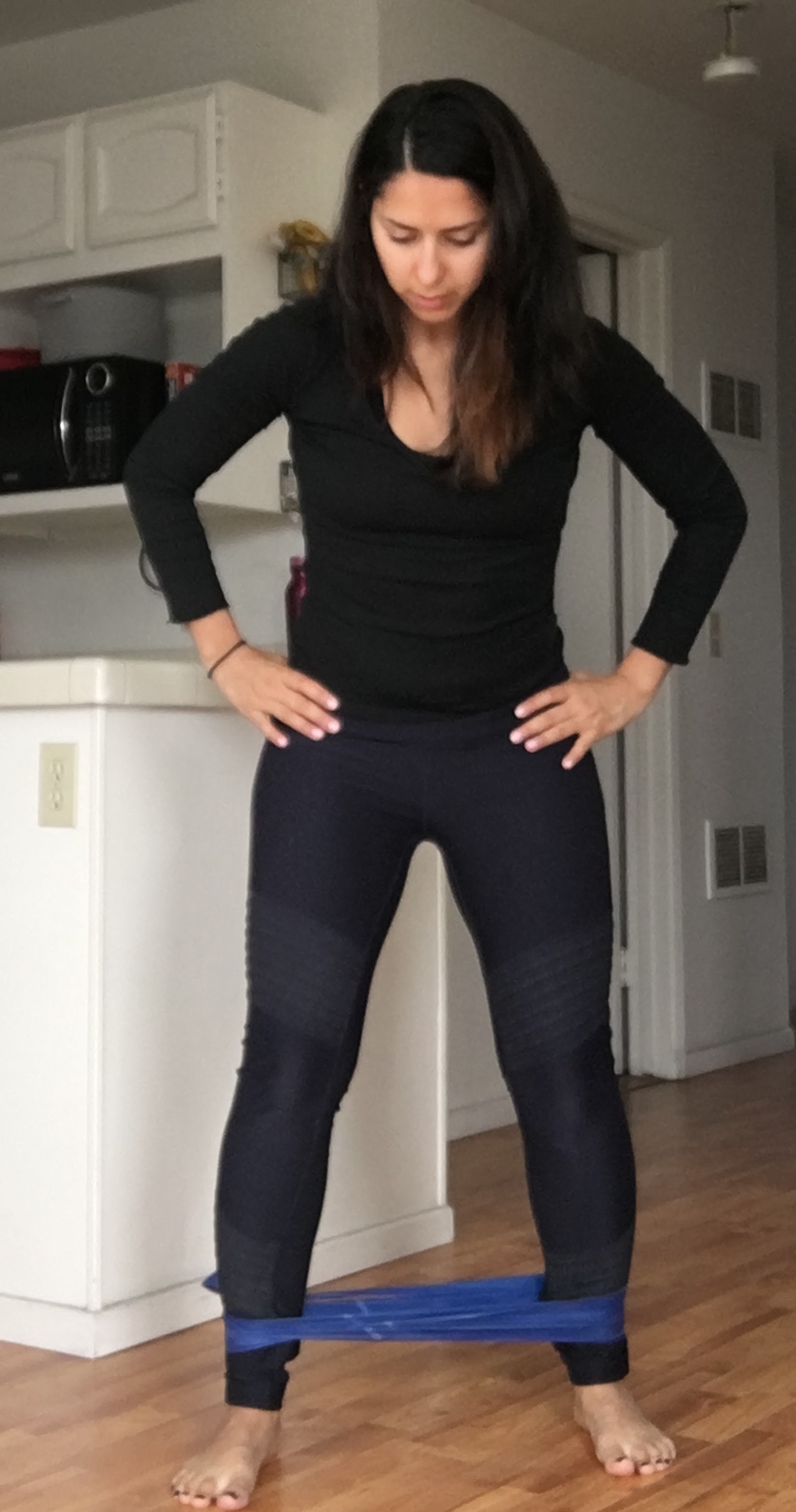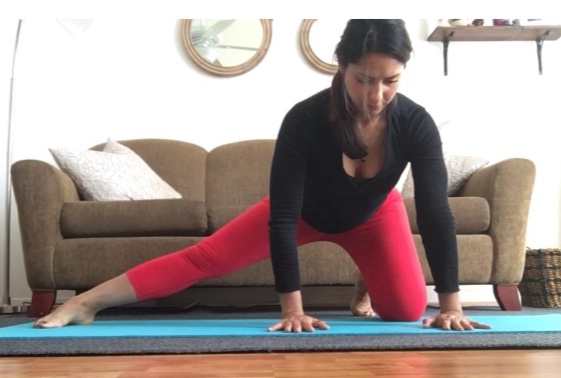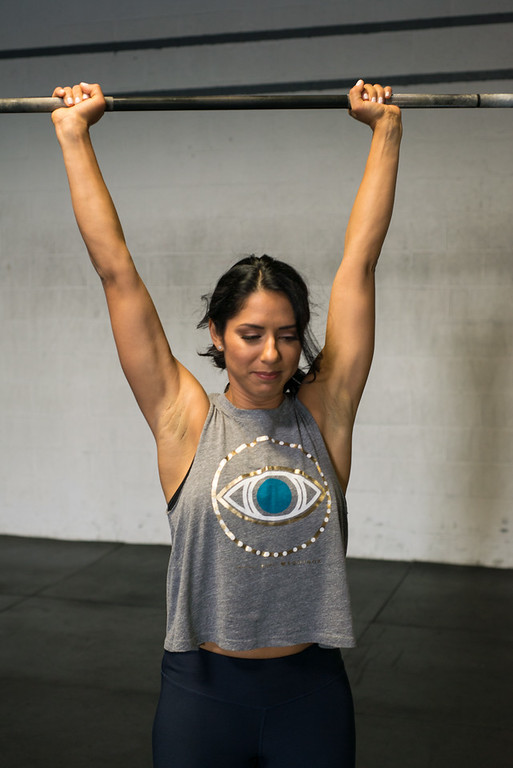The mobility craze, much like all diet trends, has raised a number of questions over the years. Some of them include:
- Do I need to stretch more or can I just do yoga?
- Is foam rolling enough or is Pilates the trick?
- Which drills do I need to do?
- How do I know which one to do?

Truth be told, we could all use more stretching, yoga, Pilates, drills, and foam rolling in our lives, but ain’t nobody got time to do all the above in a single session. Plus, what works for a period of time might not work all the time, nor will it work for every single body type. This is especially true for the female strength athlete whose mobility needs differ slightly from her male counterparts.
I’m not arguing that women are special snowflakes that should be treated differently from men, but there are specific mobility challenges that I see more in women than in men that need to be prioritized.
Women and hypermobility
Generally speaking, women tend to fall towards the hypermobility front more often than men. Hypermobility refers to the looseness of the ligaments connecting to the bones, causing the individual to do things like “hang out” in their ligaments instead of in the appropriate muscles.
I for one, tend to fall into this camp and I pay close attention to my female clients who are like this as well. Hypermobility in the hip can cause an abnormal shift or rotation in the hips, leading to potential knee, foot, hip and pelvic pain. This is particularly troublesome for two other reasons.
First, women naturally release the highest levels of the hormone Relaxin during ovulation, causing the ligaments to loosen. During pregnancy, Relaxin makes way for the baby to pass through the birth canal (this is known as ligament laxity) to allow delivery. This laxity puts women at greater risk for sprains and ligament injuries more so than men.
Second, women have a higher Q-angle than men due to their naturally wider pelvis (because again, babies). The Q-Angle refers to a measurement of the angle between the quad muscles and the patella tendon. A normal Q-Angle for men is 14 degrees and 17 degrees for women. According to the Sports Injury Clinic, the Q-Angle can lead to mal tracking of the patella and over time, cause trauma to the cartilage on the knee.
With this in mind, most female strength athletes need more stability, not mobility around the hips, and if she’s especially hypermobile, then this likely applies to other areas of the body, like her shoulders (but that’s a post for another day).
Lateral band walks, monster walks, clamshells, side-lying leg raises and so on, are wonderful exercises for women to strengthen the muscles around the hip and provide them with more stability. Sure, some mobility drills are necessary and useful, particularly right before a lifting workout but my hypermobile girls should spend a little extra time on the strengthening corner.
Women and Ankles: The Curse of Carrie Bradshaw
Carrie Bradshaw did more than just set unrealistic expectations about life in New York City; she also made wearing high heels appear as necessary and as easy as breathing.
Well, it’s not, but therein lies the problem. We love wearing heels despite how uncomfortable they are, and if you’re a lady that digs nice shoes and barbells, then you’re pretty much cursed with foot problems.
According to this report from Women’s Health Magazine (an oldie but a goodie) wearing high heels can stiffen the Achilles tendons, restrict circulation in the lower limbs, stress the knee, and put us on the express train to osteoarthrisis. Sweet.
As if all that wasn’t bad enough, walking in high heels can cause us to push the hips forward, arch the lower back and change our posture in such a way that stresses our hip muscles and tendons (remember that this area was already a bit of a red flag earlier).
So you might be wondering “Are high heels worth it?”
Um, yes….high heels are awesome. Don’t waste your time arguing about this.
Nevertheless a woman’s ankle mobility issues is a little different from a man’s because well, we don’t wear sensible shoes.
What to do now
There’s no need to give up your foam roller anytime soon, but the goal here is to give these key areas – the hips and ankles – some extra TLC to avoid injury or pain down the road. Our goals as athletes at any level is to stay strong for the long-haul, avoid injury, and avoid a surgery due to an injury. I think we can all agree that no one wants those things.
Here are some of the top moves I use for myself and my female strength athletes.
Lateral band walks


Key points:
- How: Mini band around the ankles or a hip circle above the knees. Walk from side to side with toes pointing forward
- Goal: Strengthen the glute medius which helps stabilize the pelvis
- Do: Use as part of a warm-up or as an accessory exercise in a workout
Pilates series
This video is part of the Pilates FloWOD online course and was shared in the “Why Stretching Your Hips is a Waste of Time” blog post. Read it HERE.
https://vimeo.com/237489070
Adductor Quadruped rockbacks

Key points:
- How: Get into the position above and gently rock back and forth 8-10x
- Goal: Open up the groin and adductor area. It’s a nice stretch/mobility combo that feels really good!
- Do: As part of a warm-up before a big lift like deadlift, squat, snatch, cleans, etc.
Rolling out the feet
(Do you really need to see a picture of my foot on a ball? Didn’t think so..)
Key points:
- How: Roll your feet on a tennis ball (easy), lax ball (hard), or golf ball (hardest) from heel to toe.
- Goal: Reduce tightness in foot’s tissue and muscles that have taken a beating all day.
- Do: Any time of day, every day.
Pilates footwork with a Theraband (Buy Pilates FloWOD for video access here)
Key points:
- How: Wrap a Theraband around the ball of the foot and toes. Work on flexing and pointing the feet 10-20 times to loosen up the ankle joint.
- Goal: Mobilize the ankle joint, warm up the ankles.
- Do: Before lifting or anytime as a stretch session. You can find more on that in the Pilates FloWOD online course.
When it comes to the mobility challenges of any human, the differences are small but significant. Female strength athletes don’t have to overhaul their approach to mobility, but should prioritize a few key areas (like the hips and ankles) more so given their lifestyle choices and gender differences. Do what you can, work with what you have, and don’t sweat getting it perfect.


Comments 6
Pingback: Stuff To Read While You're Pretending To Work: 1/12/18 - Tony Gentilcore
Pingback: Stuff To Read While You’re Pretending To Work: 1/12/18 | Don Kellough
Pingback: January 16th, Tuesday - Crossfit Tipping Point
Pingback: A Resistance Band Travel Workout - Barbell Pilates with Trish DaCosta
Pingback: Single-leg Training Tips from the Pros - Barbell Pilates with Trish DaCosta
Pingback: Four Filler Exercises to Boost Your Squat - Barbell Pilates with Trish DaCosta